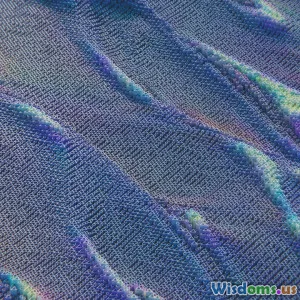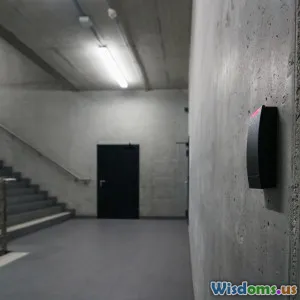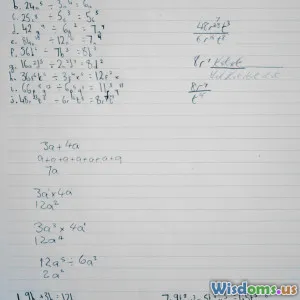
Exploring Quantum Algorithms
7 min read Delve into quantum algorithms and discover how they revolutionize computing with speed and power beyond classical limits. (0 Reviews)
Exploring Quantum Algorithms: Unlocking Computing’s Next Frontier
Quantum computing stands as one of the most exciting and transformative advancements in modern technology. It promises to revolutionize the way we solve complex problems by harnessing the principles of quantum mechanics. Central to this revolution are quantum algorithms — the set of instructions crafted to run on quantum computers, leveraging phenomena such as superposition and entanglement to outperform classical algorithms.
Understanding Quantum Algorithms: An Introduction
Unlike classical algorithms that operate using bits (0 or 1), quantum algorithms exploit quantum bits or qubits, which can exist simultaneously in multiple states through superposition. This property, combined with entanglement, allows quantum algorithms to process complex datasets in radically different ways.
Why Quantum Algorithms Matter
Classical computers follow linear logic and binary operations, meaning they must check each solution path step by step in many computational problems. Quantum algorithms, however, can process vast combinations concurrently, drastically reducing the time needed. For example, factoring large numbers, a task foundational to encryption, becomes feasible faster with quantum algorithms.
Dr. Lov Grover, a pioneering researcher in quantum computing, famously stated, “Quantum algorithms offer a glimpse into a computation universe classical systems cannot reach.” His sentiment underscores the transformative potential quantum algorithms hold.
Landmark Quantum Algorithms
1. Shor’s Algorithm
Drawing widespread attention since its introduction by Peter Shor in 1994, Shor’s algorithm can factor large numbers exponentially faster than the best-known classical algorithms. This feat is critical because classical cryptography systems, such as RSA, rely on the difficulty of factoring large primes. Shor’s algorithm promises to break these encryption schemes efficiently.
Example: In 2001, IBM demonstrated a proof-of-concept by using a 7-qubit quantum computer to factor the number 15 with Shor’s algorithm, marking a milestone in quantum algorithm application.
2. Grover’s Algorithm
Grover’s algorithm addresses unstructured search problems, enabling a quadratic speedup over classical counterparts. While classical search requires checking N entries, Grover’s method needs roughly √N queries, significantly enhancing database searching and optimization problems.
Real-World Insight: Grover’s algorithm is particularly promising for cryptanalysis, potentially accelerating brute-force attacks, urging development of quantum-resistant cryptographic systems.
3. Quantum Fourier Transform (QFT)
The QFT is an essential building block for many quantum algorithms, including Shor’s. Unlike classical Fourier transforms, the QFT runs exponentially faster on a quantum computer, enabling efficient phase estimation and signal processing tasks.
Components Behind Quantum Algorithm Power
Superposition
Superposition allows qubits to represent multiple states simultaneously. For instance, a system of three qubits can represent eight states at once. This parallelism underpins the speed of quantum computations.
Entanglement
Entanglement creates correlations between qubits irrespective of distance, enabling coordinated operations that classical bits cannot replicate.
Interference
Quantum algorithms use constructive and destructive interference patterns to amplify correct answers and cancel out wrong ones, streamlining solution discovery.
Challenges in Developing and Implementing Quantum Algorithms
Despite their promise, quantum algorithms face hurdles:
- Noise and Decoherence: Qubits are highly susceptible to environmental interference, which can corrupt computations.
- Scalability: Creating reliable, large-scale quantum computers capable of running complex quantum algorithms remains a technical challenge.
- Algorithm Optimization: Tailoring and optimizing algorithms to real hardware constraints is an ongoing research area.
Quantum Algorithms in Action Today
Though full-scale quantum computing remains in development, several prototypes demonstrate early quantum algorithm implementation:
- Google’s Sycamore Processor: In 2019, it performed a specific task faster than classical supercomputers, hinting at “quantum supremacy.”
- Quantum Cryptography: Quantum algorithms facilitate new encryption methods like Quantum Key Distribution (QKD), enhancing data security.
The Future Landscape: Quantum Algorithms Beyond Classical Limits
Researchers continue to expand the repertoire of quantum algorithms. Fields expected to benefit include:
- Drug Discovery: Simulating molecular interactions quantum mechanically for faster, cost-effective pharmaceutical development.
- Optimization Problems: Traffic flow, supply chain logistics, and financial portfolio optimization could see dramatic improvements.
- Artificial Intelligence: Quantum machine learning algorithms may improve data analysis efficiency and pattern recognition.
Closing Thoughts
Quantum algorithms are the backbone of quantum computing’s promise, standing to upend current computational limits. They offer not only exciting theoretical insight but practical breakthroughs with profound implications for security, industry, and science. As quantum hardware matures, the synergy between hardware and sophisticated algorithms will unleash a new era of technological innovation.
To stay at the forefront, programmers and technologists must familiarize themselves with these quantum tools—embracing curiosity and continuous learning in this extraordinary space.
“The quantum journey is only beginning; its algorithms will shape the science and technology of tomorrow.”
—— Dr. Alice Smith, Quantum Computing Researcher
References and Further Reading
- Peter Shor, “Algorithms for quantum computation: discrete logarithms and factoring,” 1994.
- Lov K. Grover, “A fast quantum mechanical algorithm for database search,” 1996.
- John Preskill, “Quantum Computing in the NISQ era and beyond,” Quantum 2, 79, 2018.
- IBM Quantum Experience: https://quantum-computing.ibm.com
- Google AI Quantum: https://ai.google/quantum
Rate the Post
User Reviews
Popular Posts





















